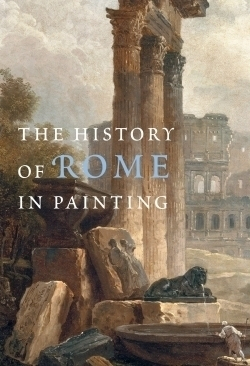It looks like you've stumbled upon a page meant to be read by our code instead of viewed directly. You're probably looking for this page.
The History of Rome in Painting
- 2011 INDIES Winner
- Honorable Mention, Art (Adult Nonfiction)
Discovered by Romulus in 753 B.C., a village of shepherds that would eventually become the Eternal City was initially understood as an abstract concept and a symbolic image rather than a real place, according to this fine book. By 70 A.D. that perception had changed and Roman daily life in the Imperial villas was depicted in magnificent wall frescoes and floor mosaics. Much later, as the capital of Christianity in the early medieval era, Rome was the subject of the first known cityscape in western art, painted in 1280 by the Florentine artist Cimabue. Both of these visual triumphs are celebrated in The History of Rome in Painting.
Opening this book—as impressive in its girth (11x17 inches) as in the excellent quality of its more than three hundred color reproductions—is a sensuous experience, and a window onto multiple scenes both glorious and gory: The Birth of Venus, The Assassination of Julius Caesar, and numerous representations of the Forum, both intact and in ruins. Students of art history and architecture, as well as readers for whom art represents a passion or an escape, will also appreciate the book’s solid narrative and essays by eminent art historians; the tone throughout is scholarly without being dry.
Tracing the city’s development from antiquity into the mid-twentieth century, the works of Giotto, Botticelli, Raphael, Titian, Caravaggio, Michelangelo, de Chirico, and Mondrian, among others, are available at such a close range that it’s surprising the pages don’t smell of pigment. Comprehensive biographies of 175 artists are also included. Of Michelangelo, the author writes simply: “[He] originated a new conception of the human body that became a vehicle for a message both ethical and spiritual.”
Champeaux wisely cautions her audience to remember that these paintings weren’t the personal artistic visions of those gifted men, but rather the reflections of visual precedents and the requirements of individual patrons. For this reason, the paintings recorded a very specific perspective on the intellectual, artistic, religious, and political life of this extraordinary place as it evolved, while also contributing to its development.
Significantly, The History of Rome in Painting also features the work of famous non-Italian visitors like Ingres, Turner, and Picasso, artists for whom Rome was a rite of passage. And it traces the rise of museums in the early 1700s, when it was justly determined that citizens should “own” the relics of their city. A more comprehensive, accessible, and lavishly presented collection would be difficult to find. Earlier books in this series focused on Venice and Paris.
Reviewed by
Julie Eakin
Disclosure: This article is not an endorsement, but a review. The publisher of this book provided free copies of the book to have their book reviewed by a professional reviewer. No fee was paid by the publisher for this review. Foreword Reviews only recommends books that we love. Foreword Magazine, Inc. is disclosing this in accordance with the Federal Trade Commission’s 16 CFR, Part 255.
